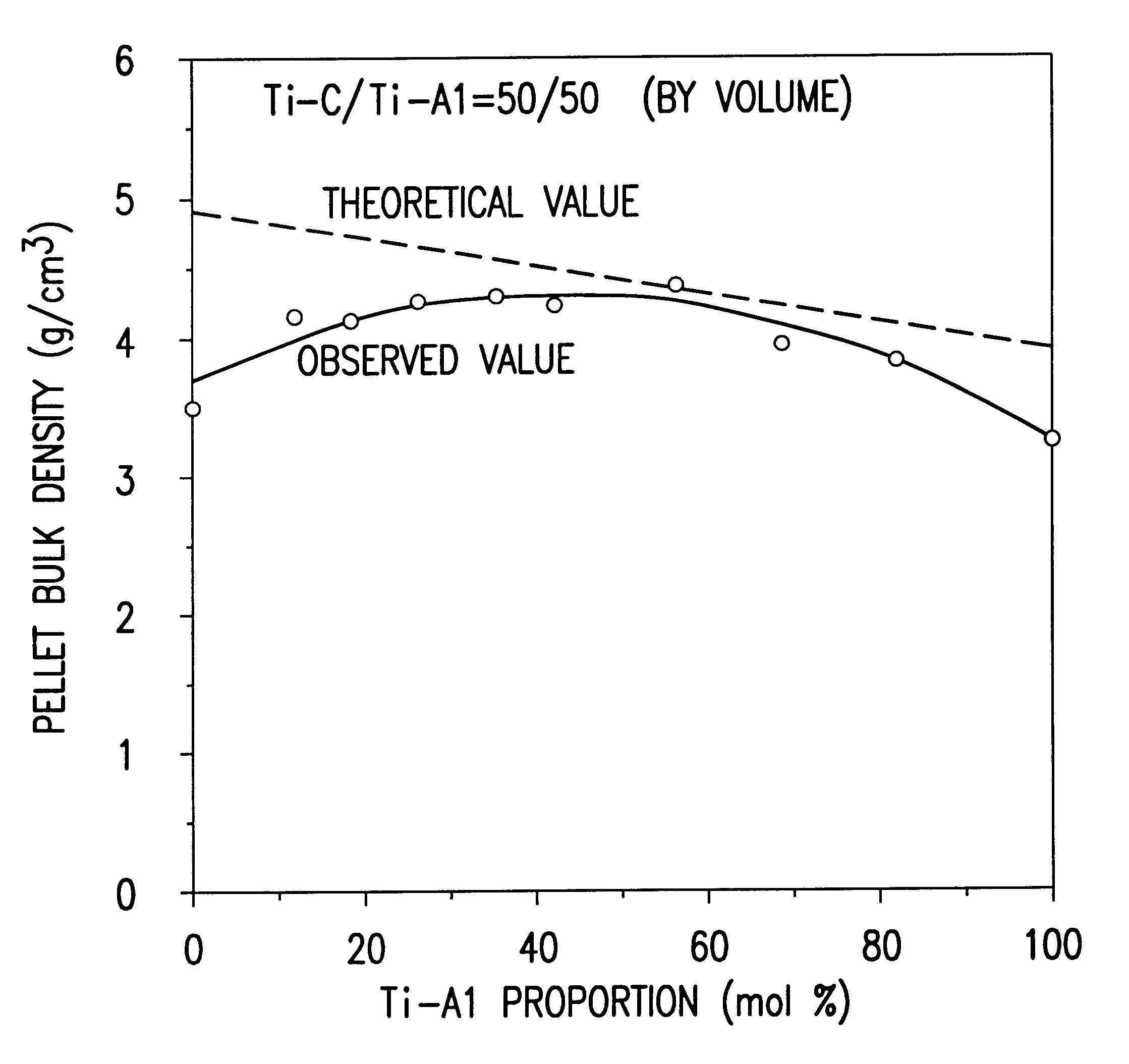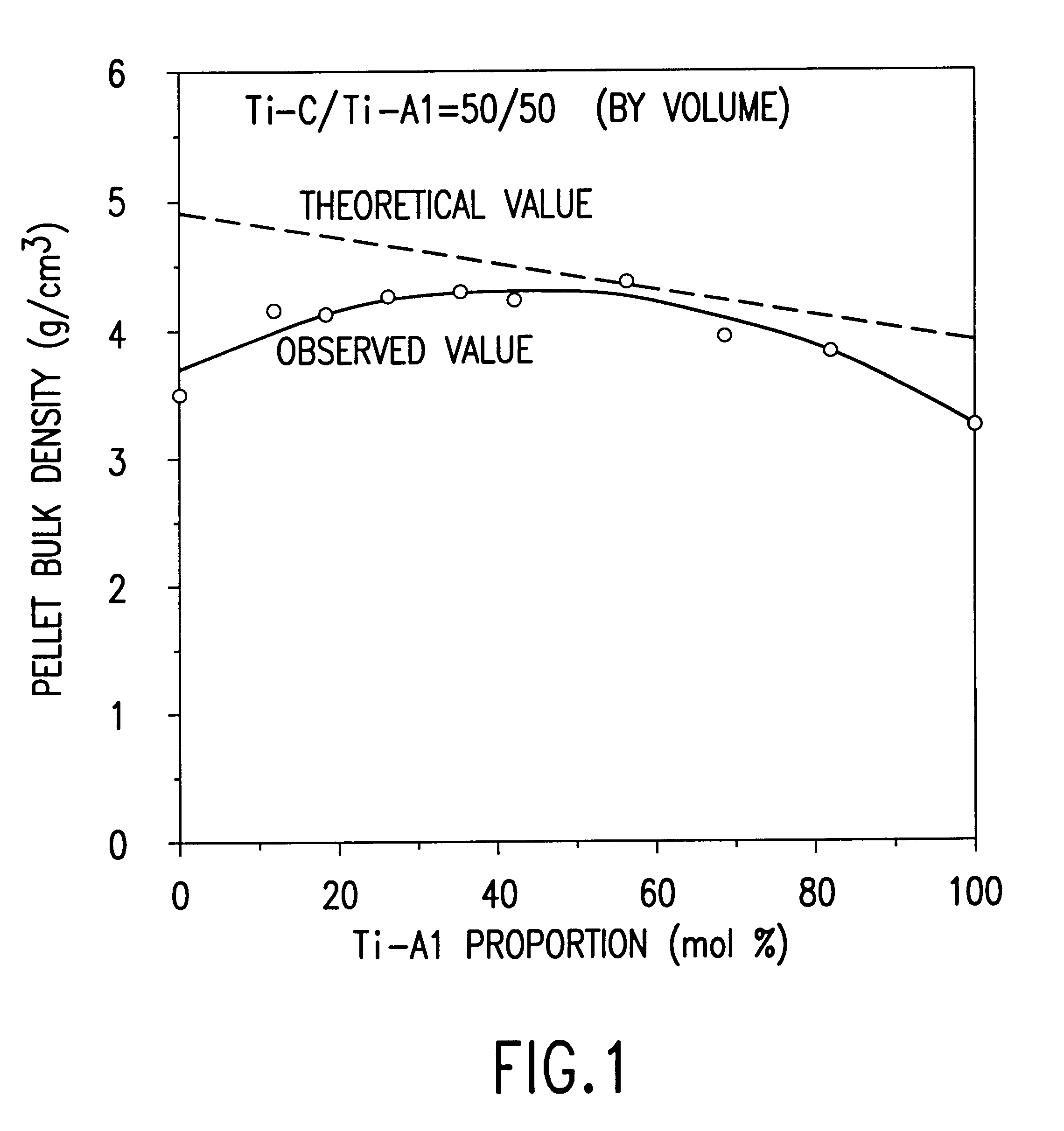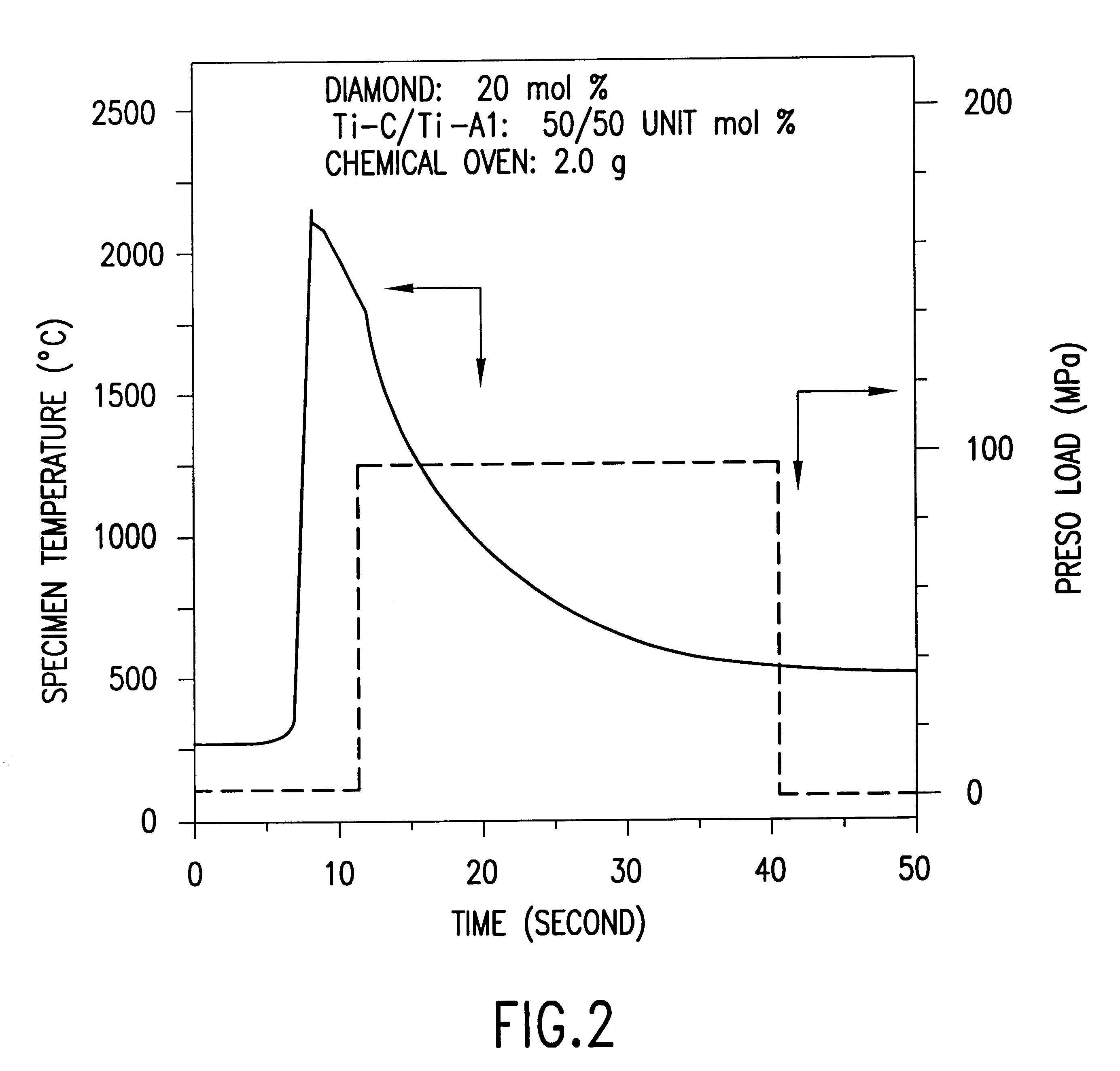Composite and method for producing the same
a technology of ceramic/metallic composites and composites, applied in the field of ceramic/metallic composites, can solve the problems of hardly the case, the inability to obtain a product substantial free of pores, and the limitation of the largest product dimension possible in volum
- Summary
- Abstract
- Description
- Claims
- Application Information
AI Technical Summary
Benefits of technology
Problems solved by technology
Method used
Image
Examples
example 1
Powders of 22 .mu.m titanium, 7 .mu.m graphite, and under 300 mesh aluminum were dosed and mixed well to prepare a starting material composition, with the Ti:C:Al proportion being 73:11:16, by weight, which corresponds to a TiC / TiAl ratio of 50 / 50 by volume. The mixed powder is then press-formed, in a die, to a circular pellet 16 mm across and 4 mm thick, and sintered in an arrangement sectionally illustrated in FIG. 3. The equipment, generally designated at 1, basically comprises a die 2, with a recess of 30 mm I.D. and 60 mm depth, and a punch 3. The cavity around the pellet 4 was filled with 80Ti--20C, by weight, mixed powder 5 to a thickness of 1 mm and molding sand 6 for the rest. A graphite ribbon 7 was placed as an igniter to be in contact with the powder 5 over the pellet 4.
The sintering arrangement, as assembled, was mounted on a standard uniaxial hydraulic press (not shown), and the pellet was ignited by passing electric current through the ribbon while keeping off the pun...
example 2
A pellet was prepared using the same starting material composition as in the Example 1, except that 15 volume % of nominal (average) 100 .mu.m synthetic diamond powder was added to the composition. The whole powder was filled sufficiently and placed in a die to form a pellet. For sintering, the equipment and method were used as in the example 1. The pellet as prepared was examined on a polished surface by optical microscopy and showed, in general, a regular distribution of diamond particles over the whole matrix, but no trace of graphitization on the particles. Bond tails were noticed for the particles, instead, which evidence that the matrix material composition used could hold diamond particles adequately. The pellet product was fixed to a support and used for the grinding of end surface of a ceramic material.
example 3
Pellets were prepared using the same starting material as in Example 1, except that 300 mg of nominal 100 .mu.m synthetic diamond powder was placed in advance in each forming die on the bottom. For sintering the arrangement and operation were essentially the same as in the antecedent example, but that a cup of tantalum metal, of 16 mm I.D. and 2 mm depth (wall thickness 50 .mu.m), was put over the pellet lower portion (that is on the diamond end) for the protection of the diamond. An alumina disk, 16 mm across and 10 mm thick, was placed in contact and in alignment under the cup for the purpose of cooling. The pellet product comprised 1 mm thick diamond containing layer in one end. The optical microscopy revealed no graphitization on the diamond particles, and evidenced that they would be held adequately by the matrix. One of the sintered pellets was further machined to the given dimensions and used as a cutting tool element, while the others, as a detector end and specimen holder f...
PUM
| Property | Measurement | Unit |
|---|---|---|
| melting point | aaaaa | aaaaa |
| diameter | aaaaa | aaaaa |
| temperature | aaaaa | aaaaa |
Abstract
Description
Claims
Application Information
 Login to View More
Login to View More - R&D
- Intellectual Property
- Life Sciences
- Materials
- Tech Scout
- Unparalleled Data Quality
- Higher Quality Content
- 60% Fewer Hallucinations
Browse by: Latest US Patents, China's latest patents, Technical Efficacy Thesaurus, Application Domain, Technology Topic, Popular Technical Reports.
© 2025 PatSnap. All rights reserved.Legal|Privacy policy|Modern Slavery Act Transparency Statement|Sitemap|About US| Contact US: help@patsnap.com



